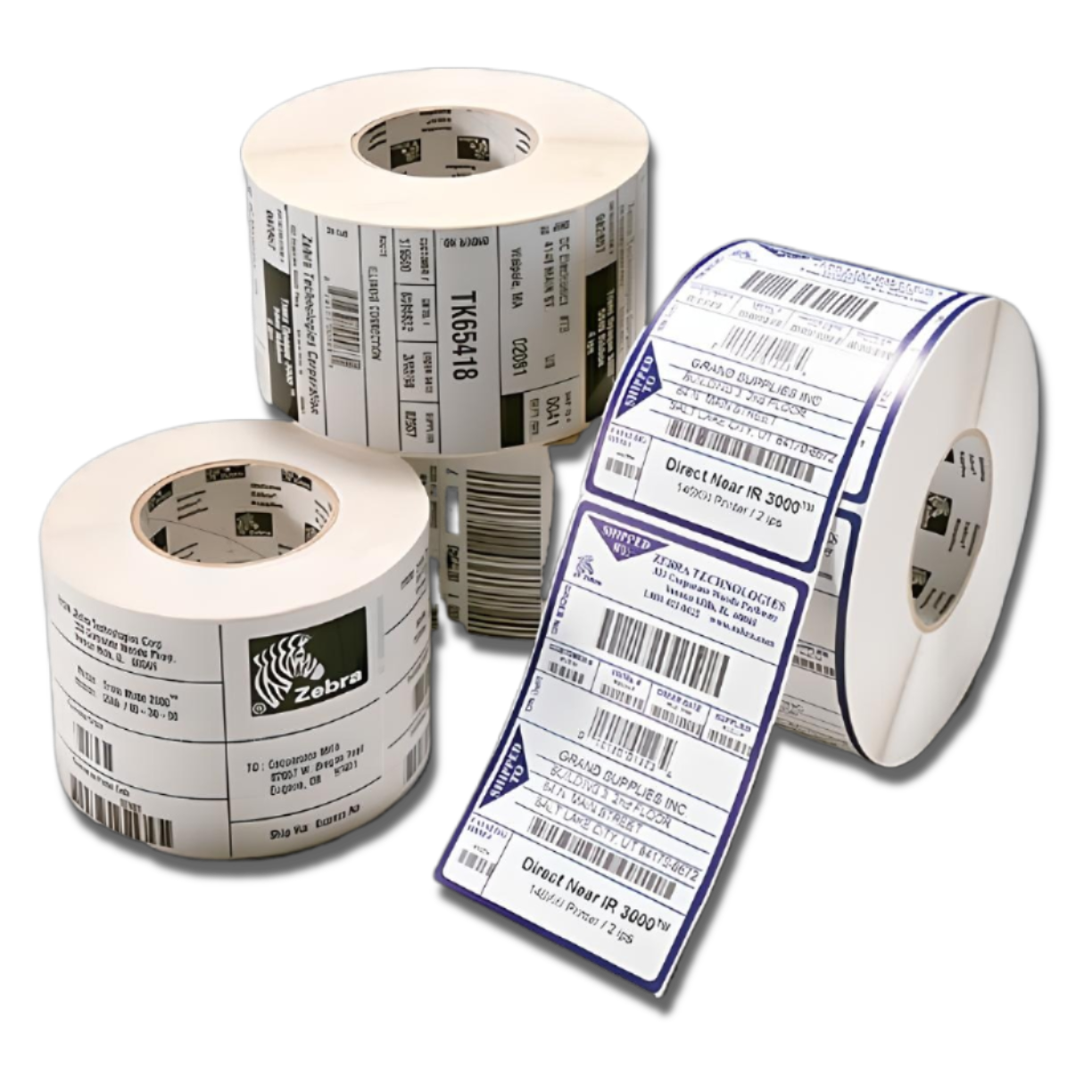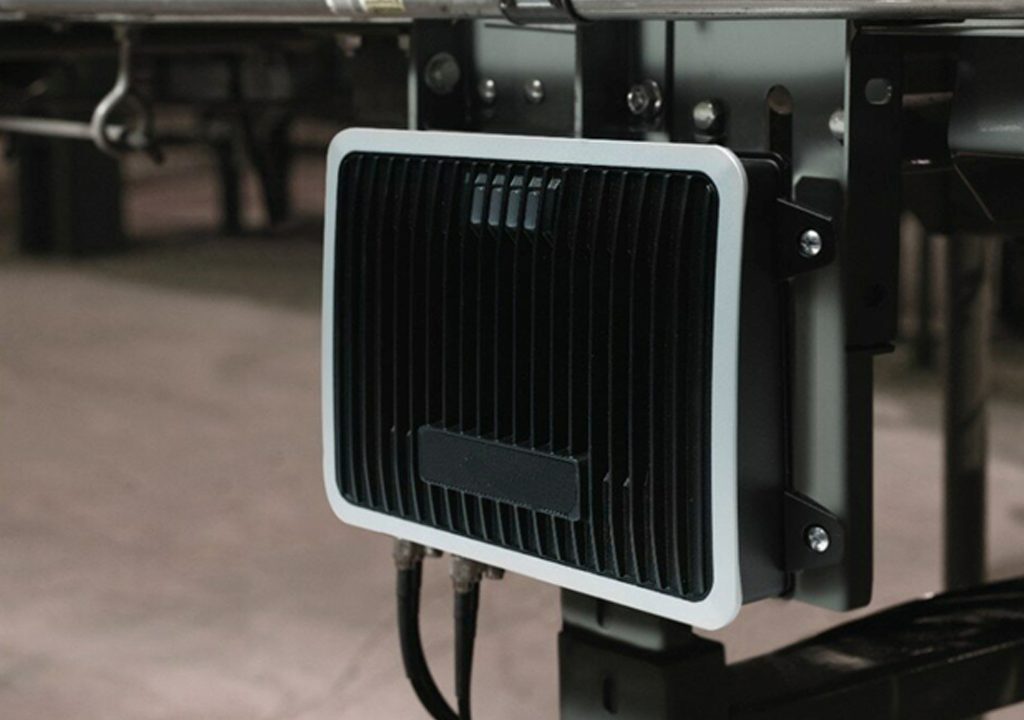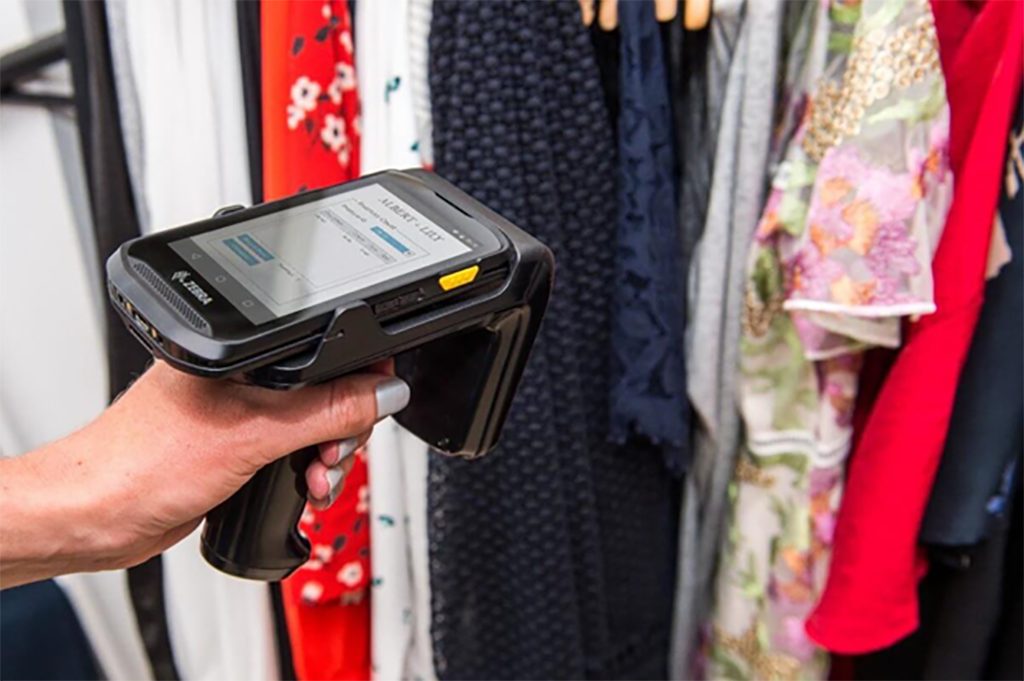
An RFID reader, also known as a radio-frequency identification reader, is a device used to collect information from RFID tags and track individual objects. Radio waves are used to transmit data from the tag to the reader.
RFID readers connect to a host computer system or network and exchange data in various ways. Connecting through a network allows readers to operate more flexibly than a direct connection to a computer and helps create an interconnected system network.
Classification of RFID readers
1. Classification by mobility
Fixed RFID Reader

Fixed RFID readers typically come with two, four, or eight ports and offer high performance. These readers are high-powered and sensitive, ideal for non-mobile applications. Integrated readers are also considered fixed readers but combine both the RFID reader and antenna in a single device. Integrated readers usually provide medium performance and are suitable for applications with a limited number of RFID tags and small coverage areas.
Mobile RFID Reader
A common type of mobile RFID reader is the mobile computer with a built-in antenna. These readers do not support external antenna ports but come with several features such as onboard processing and built-in operating systems capable of running various software programs while maintaining high data processing speed.
Another type of mobile reader is the handheld RFID reader, which is a compact device that connects to smart devices via Bluetooth or auxiliary ports and works with mobile applications.
Most RFID readers are designed with specific specifications, options, and features that make them unique compared to other readers in the market. Below are some common options and features of the most popular RFID readers.

2. Classification by other characteristics
While classifying RFID readers by mobility is most common, they can also be distinguished based on other characteristics such as connectivity options, available utilities, features, processing capability, power options, antenna ports, etc.
- Frequency Range: 902–928 MHz (US), 865–868 MHz (EU), etc.
- Mobility: Fixed readers, integrated readers, and mobile readers
- Connectivity Options: Wi-Fi, Bluetooth, LAN, serial port, USB, auxiliary port
- Available Utilities: HDMI, GPS, USB, camera, GPIO, 1D/2D barcode scanner, portability
- Processing Capability: Integrated or external processing
- Power Options: Power adapter, PoE, battery, vehicle-integrated, USB
- Antenna Ports: None, 1-port, 2-port, 4-port, 8-port, 16-port
RFID reader classification also depends on the type of RFID tag used.
RFID Reader connectivity
RFID readers connect to computer systems, servers, and transmit/receive data through various methods. Network-based connectivity allows readers to operate more flexibly than direct computer connections. Instead, they can interact with software programs and other RFID readers to form an interconnected network.
Wi-Fi
Readers can connect to a network or host computer via Wi-Fi if the devices support it. Wi-Fi provides a wireless connection solution for RFID readers. Wi-Fi and LAN ports are typically the only choices for applications that require network connectivity. An added benefit of network-connected RFID readers is the ability to interface with printers or other smart devices.
Bluetooth
Bluetooth allows the reader to wirelessly connect to the host system. Bluetooth options are often available in handheld devices, enabling connection to smart devices such as phones and tablets.
LAN
Local Area Network (LAN) connections use Ethernet cables to operate on the same network. Once connected, RFID readers can interact with other programs and devices on the same network. If Wi-Fi is needed for an application but the reader lacks Wi-Fi capability, an Ethernet cable can be used to connect the reader to a wireless access point, effectively giving it Wi-Fi access.
Serial port
Serial ports use RS232 or USB cables to connect directly to the host system. Serial connections are optimal for simple applications with a single reader and computer system that don’t require network connectivity.
Auxiliary port
Some handheld devices can connect to tablets or smartphones via auxiliary ports such as headphone jacks or Bluetooth. Using an auxiliary port enables connection to smart devices in case the Bluetooth function is already in use for other devices.
Cost of RFID readers
The price of an RFID reader depends on the type of tags and the quantity ordered. Typically, inlay tag prices range from $0.09 to $1.75, while hard tags (more durable and weather-resistant than inlays) may cost between $1.00 and $20.00. The more customization or specialization required, the higher the price.
Criteria for choosing an RFID reader
The most suitable RFID reader is selected based on thorough testing of tag types in the intended environment and on the target object. You may also need specific customizations (e.g., connection types) to ensure the reader is compatible with your application. Here are some criteria to consider when selecting an RFID reader:
- What type of surface will the tag be attached to (metal, plastic, wood, etc.)?
- What is the required reading range?
- Are there size constraints (e.g., tag must not exceed a certain size)?
- Are there environmental conditions to consider (extreme heat, cold, humidity, frequent impact)?
- How will the reader be mounted (adhesive, epoxy, rivets/screws, cables)?
RFID technology is increasingly being applied in manufacturing and supply chain systems.









